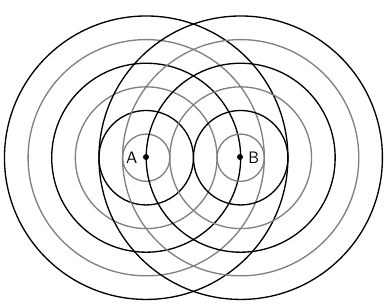This discussion about toe-in is v. interesting.
Circa 1999, with my Audio Physics Avanti Centuries in a long wall near-field setup - out in the middle of the room about 8ft from my listening position, Doing my own setup, I ended up with no toe-in. Imaging, focus, depth and resolution were, I thought, excellent. Of toe-in, AP spoke in terms of tonal balance, center-fill and image focus, adjusting in part for the relative liveliness or dampedness of the room/sound (bright/dull). There was no requirement for equal toe-in from both speakers.
Since that era, I've had 3 Wilsons. Each came with a John Giolas visit from Utah, who did the setup. I was reviewing by then and took it that each setup represented Wilson's desire for the best presentation their speaker had to offer. As it stands now, I just barely see the inside wall of each speaker, though the toe-in is not identical. As John adjusted setup in tiny increments I literally heard the speakers disappear as he got them closer and closer to their final position.
I was curious what the Magico user manual says about setup and toe-in for the Q3. Magico speakes in all caps:
Q3 User Guide p.9
In no way Peter do I question what you're hearing in yr room nor David's advice. I am, however, curious about both the theory of no toe-in as well as the sonic differences you heard, Peter, when you made that change. Would you pls say something about that besides you prefer it and it sounds more natural?
David, would you please say what that "bit more work" is? No doubt careful listening is involved. Is measuring? What do you listen for?
Thanks both for your insight.
Hi Tim,
Concept _
On the most basic level straight on setup sounds more "natural" and the concept behind it is really simple. Sound in any live performance, wether it's a solo instrument in your living room a large orchestra at a concert hall or just a conversation sound ie sound waves come straight at you, now imagine any natural situation that sound is manipulated to be beamed at you from two sides to create a center fill with fake-ish images
Setup complexity_
Speakers generate sound waves that interact with each other, room boundaries and the listener so you need to get the relationship between the speakers, the boundaries and the listener right. Sound waves are also pressure waves and when everything is in the right place the speakers will disappear and you will feel the sound and I'm not talking the way a boomy sub does it but in a natural sense. So the procedure is somewhat involved you have to understand what is happening when you move the speakers around and the wave interaction between the two speakers is specially important.

If you need more information and a scientific explanation:
https://cnx.org/contents/49PF5FCK@2.1:Ab4d8W0g@1/Wavefronts-Huygen-s-principle-and-interference
Wilson's setup guide _
Most of the Wilson factory or dealer setups I've come across the speakers are spread apart far and positioned close to the front and side walls when they exist then toed-in towards the listener which they usually position as far as they can in the room. This way they eliminate the interaction between speakers as much as possible then use the room boundaries to reinforce the bass impact that's lost when sound waves don't overlap and use the toe-in to focus the sound in a narrower pattern in a plane close to the listener while negating the effects of the room to some degree as well. Then you have the tilting drivers that they can beam at your ears to enhance mid and upper frequencies. It's certainly a valid technique and simplifies the setup process quite a bit with more consistent results but IMO the outcome isn't "natural" sounding and somewhat false. Also their setup is for a single listener in a fixed position and certain ear level, not .
I rarely do room measurements Tim, speaker setup and sitting position is done by ear I don't see the value of measurements for this purpose.
david

